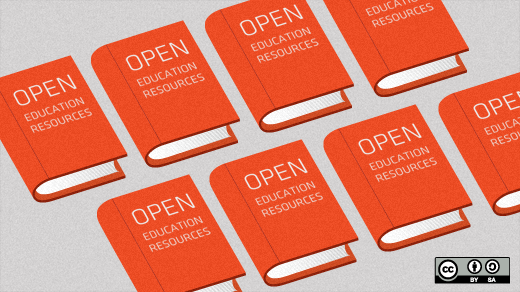On February 23, I participated in my first hackathon event; not a coding event as typical of computer programmers, but an education hackathon—a "Course Sprint" where a group of 14 individuals (educators, open science advocates, community members, and students) collaborated to design and build an open, online course, An Introduction to Open Science and Data, for the School of Open on P2PU.
Creative Commons hosted the event at their office in Mountain View, CA and invited both face-to-face and remote participants, of which I was one of four remote. The event was held in support of Open Data Day to raise awareness and involve communities worldwide in exploring how to liberate, promote, and publish open data.
I wanted to participate in the Course Sprint event for two reasons, first to contribute to the design of an online course that is open, without barriers to enrollment, and secondly to design a course that explores non-traditional course design strategies. I’m looking to explore alternatives to the structured course design model(s) I have used for several years which primarily focuses on instructional course design for college-level, credit courses. The Course Sprint format is an innovative and fresh perspective on course design for online learning.
I admit after I signed up I was unsure how remote participation would work, or how I’d be contributing. Yet, it was not for lack of resources, since organizer Billy Meinke from Creative Commons provided several documents, including a Open Science Course Sprint Welcome. Nonetheless, I had a hard time getting my head around the concept. However, the experience was productive, an example of effective collaboration and provided me with ideas for a course design model.
Getting started
Billy provided us with access to the Google docs for the event the day before, including the day’s agenda and a doc with links for the Google hangout breakout sessions. We also had access to the module development document. Documents in the public folder included a topic outline for the course, which focuses on three areas, Open Access, Open Research and Open Data.
The day started at 10:00 am with a Google Hangout, with ten participants at the Creatice Commons office and four remote. As a remote participant, our view in the hangout was of the classroom at the Creatice Commons office, with its participants, though not all visible, and a whiteboard. After group introductions and an overview, we broke into groups of three, each group working on discussing one of the three areas of focus. I chose to be in the Open Access group, and we started with a brainstorming session, then moved to finding applicable open resources to use as content sources. With a list of resources to start, we selected those that were applicable to Open Access, and sourced more on the web during our discussion. This was worthwhile, as each of us approached the topic from a different perspective and the resources we contributed were a reflection of the differing viewpoints. We collaborated within the Google doc in real-time during the Hangout.
The afternoon session was similar, though the focus was to create learning activities for students that prompted the learners to do something with the content (application), create an artifact, or interact within an online community. Each group was to follow these guidelines, as listed on the Google doc:
For each subtopic "lesson," the same basic format can be used:
- Introduce the topic to the learner. This can be done with text, images, video, or a combination of all three. The main thing to do is use open content to explain the importance (the "why") of the topic.
- Give learners a task. This is the what and how of a challenge. For example, a task could be, "Go to an Open Access publisher’s website and find a journal article on Bioinformatics," then identify the copyright restrictions (use, remix, share) for that article.
- Share the knowledge. Learners become more invested in the topic when they engage with others, so we should suggest ways of commenting on or adding to the work of other students. This will happen gradually as more students work through the course but is important to keep in mind when brainstorming the content and activities in the modules. Showing mastery of the topic will require some direct engagement with others in the open science community, which we can think up as we go.
Our group had an interesting discussion about what activities the learners were to do. We agreed on some key points, but struggled with point number three. First we discussed and tried to identify what the purpose of the activity was. How did it matter to the student? It would be easier to frame the activity for the learner when we could answer this question. Another consideration, how could we get students to engage with others when essentially it is an asynchronous, self-study course? We also discussed the challenge of motivating learners to find a community of interest, as each will have a unique area of interest. The other barrier could be technical skills—students may not have the skill level required to search and find an active open science community (one with an active member community), or know how to contribute. We worked for two hours and came up with activities to address point number one and two, though we needed more time to flesh out number three. Our discussion was constructive, and the points we touched on highlight the challenges when designing online learning for a broad and open audience.
Wrapping up
Though this experience reinforced the significant and unique challenges with open, when trying to create a structured learning experience as with this open science course, I can see great potential in it and the idea of an education hackathon. How powerful it could be with a group of educators, students, and community members working to create an educational experience around a specific topic.
Note: a resource for readers interested in hosting their own hackathon event can be found by accessing: the Open Data Hackathon, How-to Guide (created by Kevin McArthur, Herb Lainchbury, and Donna Horn).
Originally posted on Debbie's blog, Online Learning Insights. Reposted under Creative Commons.







Comments are closed.